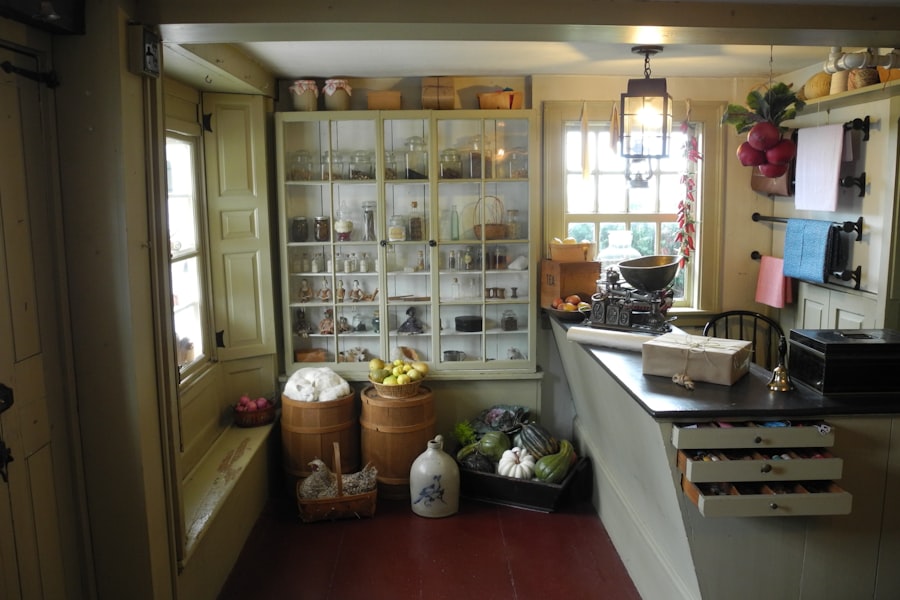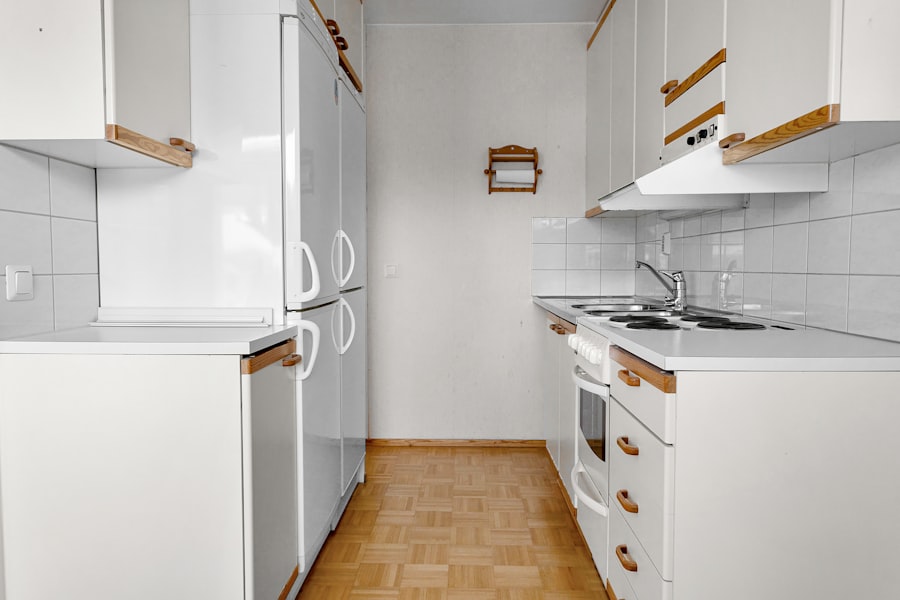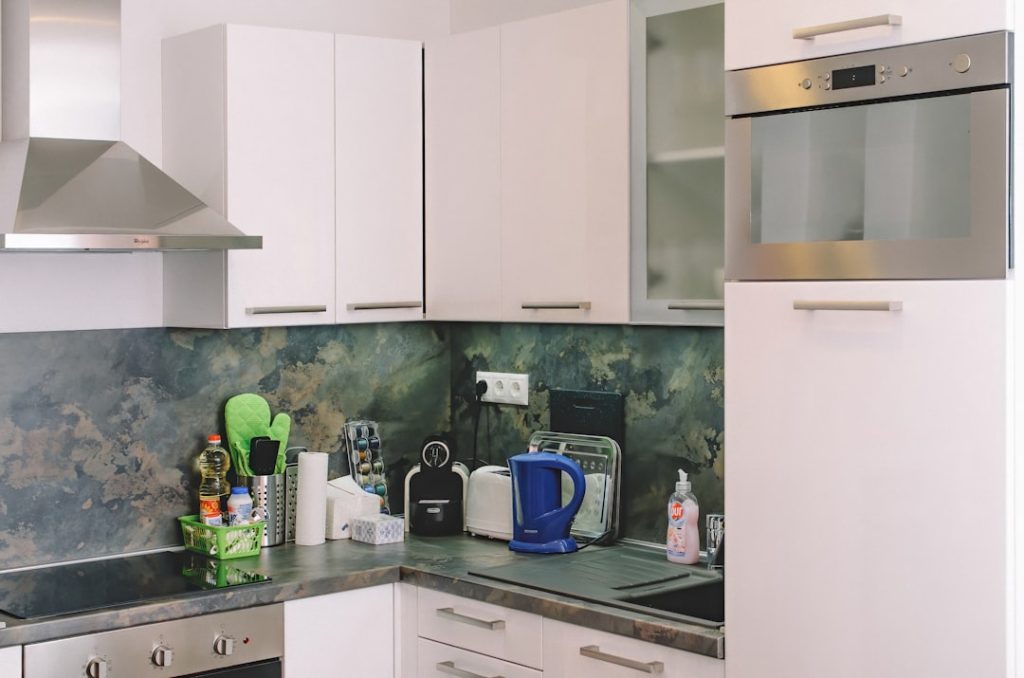In any home, the efficient use of storage space is paramount, especially in smaller living environments where every square inch counts. One effective strategy for maximizing storage is to conduct a thorough assessment of your belongings. This involves decluttering and categorizing items based on their frequency of use.
For instance, seasonal clothing can be stored away in vacuum-sealed bags or under-bed storage containers, freeing up valuable closet space for everyday wear. Similarly, kitchen items that are seldom used can be relocated to less accessible areas, such as high cabinets or the back of deep drawers. This not only creates a more organized environment but also enhances the overall functionality of the space.
Another approach to maximizing storage is to utilize furniture that incorporates built-in storage solutions. Ottomans with hidden compartments, coffee tables with shelves, and beds with drawers underneath can significantly reduce clutter while providing essential storage. Additionally, wall-mounted shelves can be installed in various rooms to display books, decorative items, or even kitchen essentials, effectively utilizing vertical space without sacrificing floor area.
By strategically placing these storage solutions throughout the home, one can create a harmonious balance between aesthetics and practicality, ensuring that every item has its designated place.
Key Takeaways
- Optimize storage by using shelves, cabinets, and organizers to declutter effectively.
- Use vertical space with tall shelving and wall-mounted units to free up floor area.
- Select multi-functional furniture to combine storage and usability in small spaces.
- Upgrade to modern, energy-efficient appliances for better performance and style.
- Enhance brightness with strategic lighting and fresh paint to create an open, inviting atmosphere.
Utilizing Vertical Space
Vertical space is often an underutilized asset in many homes, yet it offers a wealth of opportunities for enhancing both storage and design. By thinking vertically, homeowners can create a more open and airy atmosphere while maximizing the functionality of their living areas. One popular method is to install tall bookshelves that reach up to the ceiling.
These not only provide ample storage for books and decorative items but also draw the eye upward, creating an illusion of height in the room. In kitchens, hanging pot racks or magnetic knife strips can free up counter space while keeping essential cooking tools within easy reach. In addition to shelving and racks, wall-mounted hooks and pegboards can be employed in various rooms to keep items organized and accessible.
For example, in a home office, a pegboard can hold office supplies like scissors, tape, and notepads, while in a mudroom, hooks can accommodate coats and bags. This vertical approach not only maximizes storage but also adds an element of creativity to the decor. By incorporating plants on high shelves or using wall art that draws the eye upward, homeowners can further enhance the visual appeal of their spaces while making the most of their vertical real estate.
Incorporating Multi-functional Furniture

The concept of multi-functional furniture has gained significant traction in recent years, particularly as urban living spaces become increasingly compact. This type of furniture serves multiple purposes, allowing homeowners to maximize utility without compromising on style. A prime example is the sofa bed, which provides comfortable seating during the day and transforms into a sleeping area at night.
This is particularly beneficial for those who frequently host guests but may not have a dedicated guest room. Another innovative solution is the use of extendable dining tables that can accommodate varying numbers of guests. These tables can be compact for everyday use but expand to provide ample space for larger gatherings.
Additionally, furniture pieces like storage benches or coffee tables with lift-top surfaces offer hidden compartments for stowing away blankets, games, or other items that might otherwise clutter the living area. By selecting multi-functional furniture, homeowners can create versatile spaces that adapt to their changing needs while maintaining an organized and stylish environment.
Updating Appliances
| Appliance | Average Update Frequency | Update Duration (minutes) | Common Update Issues | Percentage of Users Updating Regularly |
|---|---|---|---|---|
| Smart Refrigerator | Every 3 months | 15 | Connectivity errors | 65% |
| Smart Oven | Every 6 months | 20 | Power interruptions | 50% |
| Smart Washing Machine | Every 4 months | 10 | Firmware corruption | 70% |
| Smart Thermostat | Every 2 months | 5 | Failed downloads | 80% |
| Smart Dishwasher | Every 5 months | 12 | Update rollback | 55% |
Updating appliances is a crucial aspect of modernizing a home and enhancing its overall efficiency. Older appliances often consume more energy and may not function as effectively as their newer counterparts. For instance, replacing an outdated refrigerator with an Energy Star-rated model can lead to significant savings on energy bills while providing better food preservation options.
Newer models often come equipped with advanced features such as smart technology integration, which allows homeowners to monitor and control their appliances remotely. In addition to energy efficiency, updated appliances can also improve the aesthetic appeal of a kitchen or laundry room. Stainless steel finishes and sleek designs are popular choices that lend a contemporary look to any space.
Furthermore, incorporating smart appliances—such as ovens that can be preheated remotely or washing machines that send notifications when cycles are complete—adds convenience to daily routines. By investing in modern appliances, homeowners not only enhance functionality but also increase the value of their property.
Brightening the Space with Lighting
Lighting plays a pivotal role in shaping the ambiance of a home and can dramatically alter perceptions of space. A well-lit room feels larger and more inviting, while poor lighting can make even the most beautifully decorated areas feel cramped and unwelcoming. To brighten up a space effectively, it’s essential to layer different types of lighting: ambient, task, and accent lighting all serve distinct purposes and contribute to a well-rounded illumination scheme.
Ambient lighting provides general illumination and can be achieved through ceiling fixtures or wall sconces. Task lighting focuses on specific areas where activities such as reading or cooking take place; this can include table lamps or under-cabinet lights in kitchens. Accent lighting highlights particular features within a room—such as artwork or architectural details—and adds depth to the overall design.
By strategically placing these various lighting sources throughout the home, one can create a warm and inviting atmosphere that enhances both functionality and aesthetic appeal.
Adding a Fresh Coat of Paint

A fresh coat of paint is one of the most transformative updates a homeowner can make without undertaking extensive renovations. Paint has the power to change the mood of a room entirely; lighter colors tend to open up spaces and create an airy feel, while darker shades can add warmth and intimacy. Choosing the right color palette is essential; for example, soft neutrals like beige or light gray can serve as a versatile backdrop for various decor styles, while bold colors like navy blue or emerald green can make striking statements when used as accent walls.
In addition to color selection, considering different finishes can also impact the overall look of a room. Matte finishes are excellent for hiding imperfections on walls but may require more maintenance in high-traffic areas due to their susceptibility to stains. On the other hand, satin or semi-gloss finishes are easier to clean and reflect light more effectively, making them ideal for kitchens and bathrooms.
By carefully selecting both color and finish, homeowners can breathe new life into their spaces while expressing their personal style.
Choosing the Right Flooring
Flooring choices significantly influence both the functionality and aesthetic appeal of a home. The right flooring material should not only complement the overall design but also withstand daily wear and tear based on lifestyle needs. For instance, families with children or pets may benefit from durable options like luxury vinyl plank or laminate flooring, which are resistant to scratches and easy to clean.
These materials come in various styles that mimic natural wood or stone, providing an attractive appearance without compromising on practicality. Conversely, areas such as bedrooms may call for softer flooring options like carpet or cork that offer warmth and comfort underfoot. Additionally, incorporating area rugs can add texture and color while defining spaces within open floor plans.
When selecting flooring materials, it’s essential to consider factors such as maintenance requirements, comfort levels, and how well they fit into the overall design scheme of the home. By making informed choices about flooring, homeowners can create cohesive spaces that are both functional and visually appealing.
Incorporating Smart Technology
The integration of smart technology into homes has revolutionized how we interact with our living spaces. Smart home devices offer convenience, security, and energy efficiency that traditional systems cannot match. For example, smart thermostats allow homeowners to control heating and cooling remotely via smartphone apps, optimizing energy usage based on occupancy patterns and preferences.
This not only enhances comfort but also leads to significant savings on utility bills over time. Moreover, smart lighting systems enable users to adjust brightness levels or change colors with just a voice command or tap on their devices. This level of control allows for personalized ambiance settings tailored to different activities or moods throughout the day.
Security systems equipped with smart cameras provide peace of mind by allowing homeowners to monitor their property in real-time from anywhere in the world. By embracing smart technology, homeowners can create more efficient and secure environments that cater to their modern lifestyles while enhancing overall quality of life.




